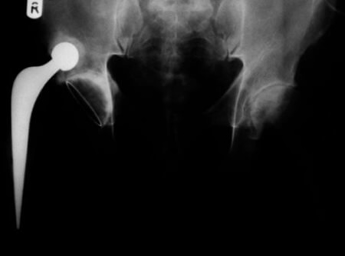 In the United States, the Food and Drug Administration closely monitors
the design, manufacturing, and marketing of medical devices. Faulty pacemakers,
implants, surgical instruments, and orthopedic hardware can lead to injury,
illness, and death. The FDA regularly reports adverse events and
medical device recalls to alert the general public as well as health professionals and ensure
the safety of patients. Among the products the FDA monitors are components
and implants used in hip joint replacement surgery.
In the United States, the Food and Drug Administration closely monitors
the design, manufacturing, and marketing of medical devices. Faulty pacemakers,
implants, surgical instruments, and orthopedic hardware can lead to injury,
illness, and death. The FDA regularly reports adverse events and
medical device recalls to alert the general public as well as health professionals and ensure
the safety of patients. Among the products the FDA monitors are components
and implants used in hip joint replacement surgery.
Hip Replacement Surgery Statistics
According to CDC data, in 2010 more than 300,000 Americans underwent hip replacement surgery, up from approximately 138,000 in the year 2000. Patients with painful hip arthritis undergo the procedure in which the hip joint is replaced with artificial plastic and metal components. These hip implants, typically composed of metals such as cobalt, chromium, and titanium, mimic the natural ball-and-socket function of the hip joint.
Hip Replacement Device Recall
In recent years, the FDA has issued a number of market withdrawals and safety alerts for hip implants, including:
- A cup impactor from Greatbatch Medical for failing sterility testing
- A femoral component from Zimmer due to high manufacturing residues
- An acetabular system from DePuy Orthopedics due to high revision surgery rates
- A hip stem from Stryker due to potential for corrosion and gradual wearing away
- An acetabular system from Smith and Nephew due to serious complications
- A hip implant from Wright due to defective design and high failure rate
Dangers and Side Effects of Defective Hip Replacement Hardware
Compared to ceramic or plastic components, metal-on-metal hip implants (in which the ball and cup are both metallic) are more durable. However, metal-on-metal implants have been linked to a number of serious medical complications, including:
- Non-sterilized devices leading to serious health problems including infections and death.
- Mix-up in packaging resulting in the wrong component being implanted in a patient with serious health consequences.
- Manufacturing residues on metallic components causing allergic reactions, infections, pain, or need for revision surgery and replacement of the implant.
- Friction between metallic components leading to metallosis, a condition where metallic debris is released into the body and causes severe pain, swelling, and reduced mobility. Poisoning of the blood from metal ions can occur. Metallosis may also cause loosening of the implant and device failure due to tissue deterioration around the joint.
- Corrosion or fretting (gradual wearing away) of metallic components resulting in pain, swelling, and numbness in the hip and changes in the ability to walk.
- Design flaws leading to bending, migration, fracture, and eventual breaking of the implant.
Hip Replacement Lawsuits
Hip implant manufacturers are liable under product liability law to compensate patients for the health consequences of defective or dangerous implants. Product liability claims for defective hip replacement implants can be complicated and must be handled by experienced attorneys who understand the law.

